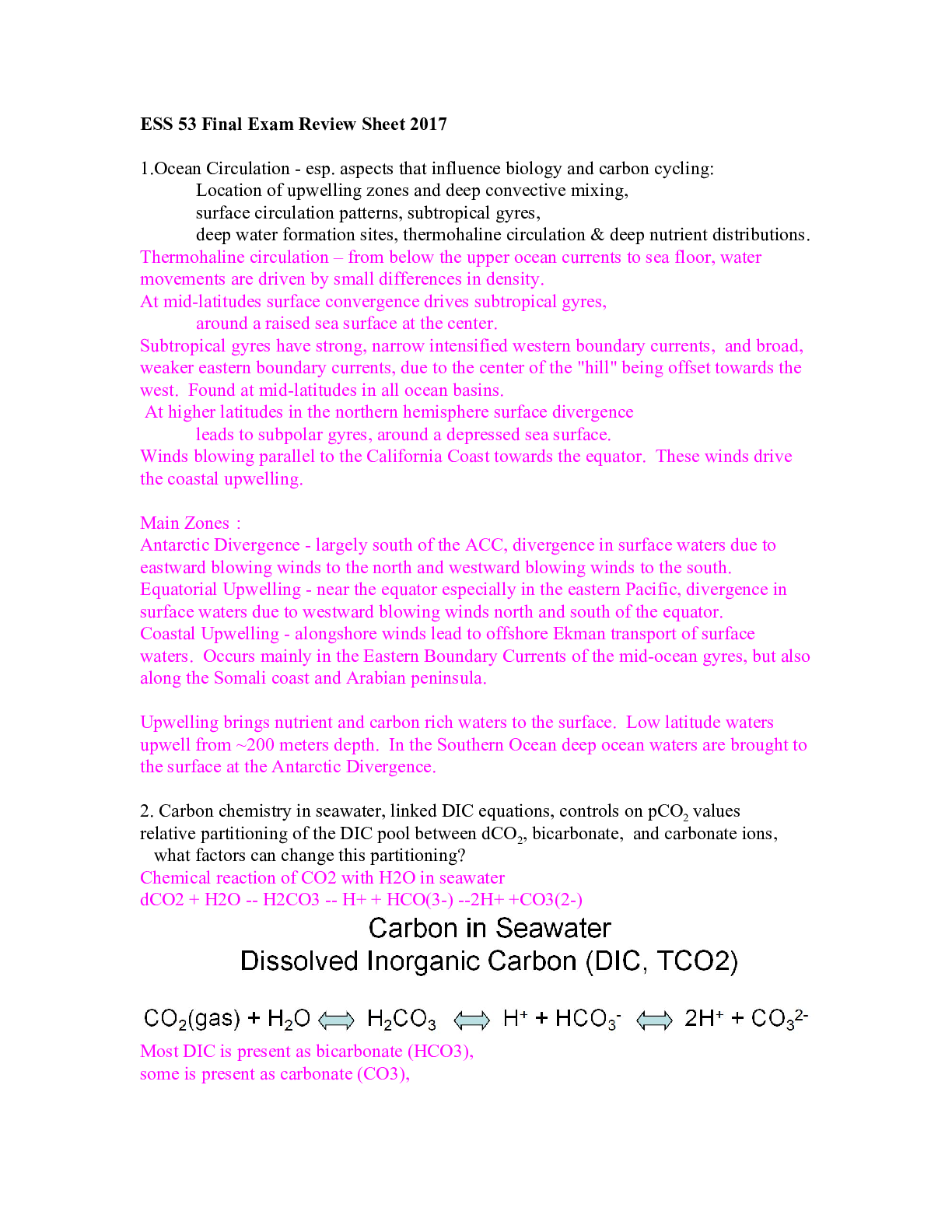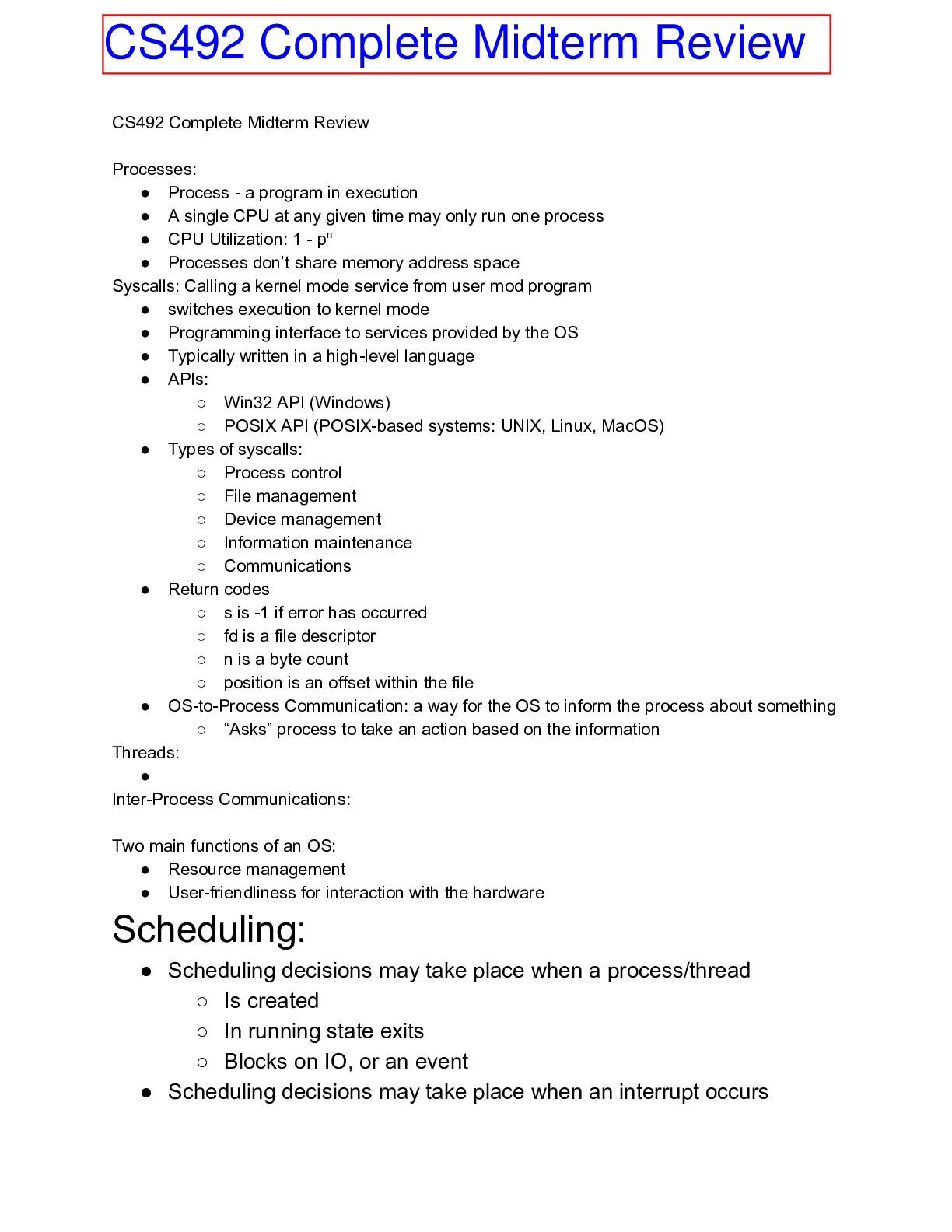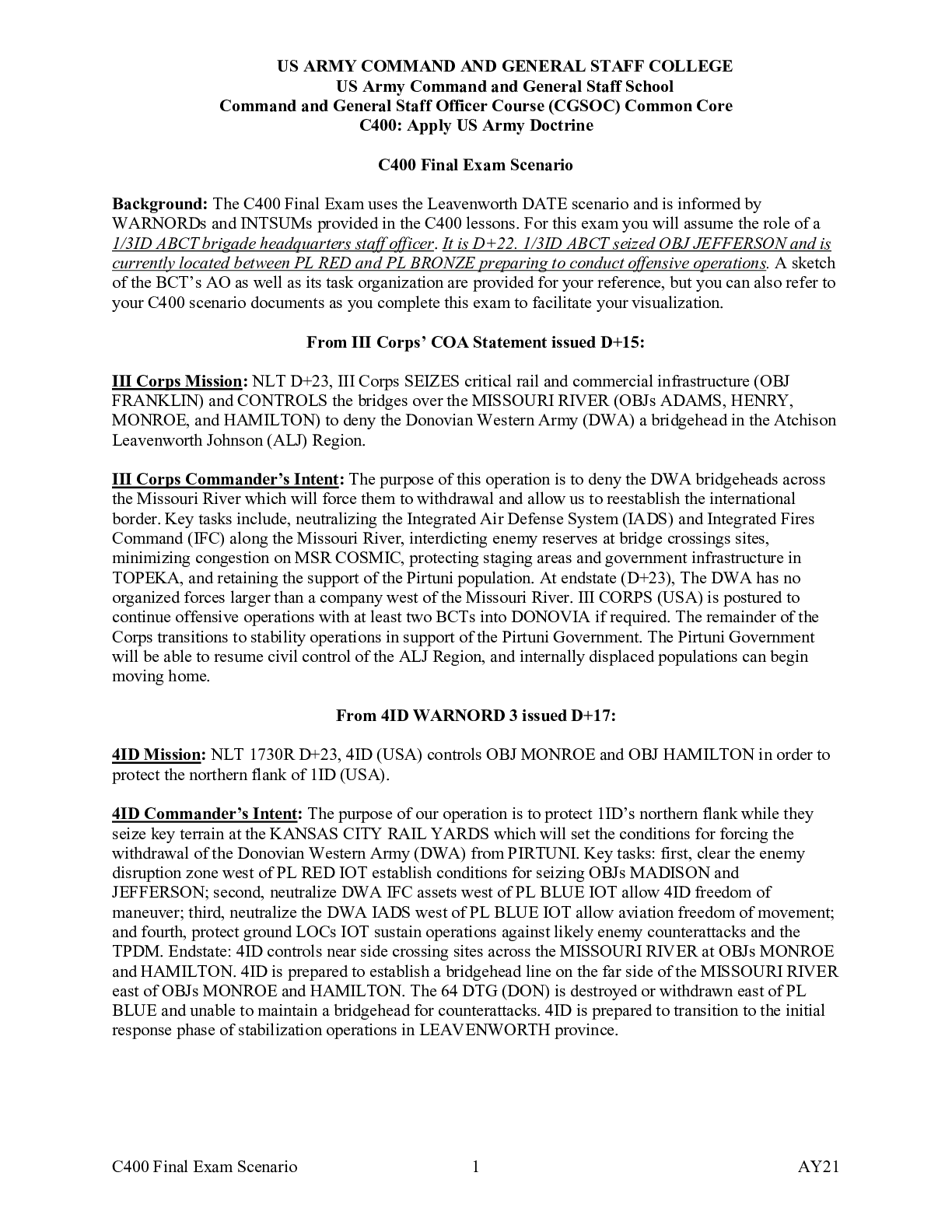Environmental Science > Final Exam Review > University of California, Irvine: ESS 53 Earth System Science ESS 53 Final Exam Review Sheet. (All)
University of California, Irvine: ESS 53 Earth System Science ESS 53 Final Exam Review Sheet.
Document Content and Description Below
ESS 53 Final Exam Review Sheet 2017 1.Ocean Circulation - esp. aspects that influence biology and carbon cycling: Location of upwelling zones and deep convective mixing, surface circulation pattern... s, subtropical gyres, deep water formation sites, thermohaline circulation & deep nutrient distributions. Thermohaline circulation – from below the upper ocean currents to sea floor, water movements are driven by small differences in density. At mid-latitudes surface convergence drives subtropical gyres, around a raised sea surface at the center. Subtropical gyres have strong, narrow intensified western boundary currents, and broad, weaker eastern boundary currents, due to the center of the "hill" being offset towards the west. Found at mid-latitudes in all ocean basins. At higher latitudes in the northern hemisphere surface divergence leads to subpolar gyres, around a depressed sea surface. Winds blowing parallel to the California Coast towards the equator. These winds drive the coastal upwelling. Main Zones: Antarctic Divergence - largely south of the ACC, divergence in surface waters due to eastward blowing winds to the north and westward blowing winds to the south. Equatorial Upwelling - near the equator especially in the eastern Pacific, divergence in surface waters due to westward blowing winds north and south of the equator. Coastal Upwelling - alongshore winds lead to offshore Ekman transport of surface waters. Occurs mainly in the Eastern Boundary Currents of the mid-ocean gyres, but also along the Somali coast and Arabian peninsula. Upwelling brings nutrient and carbon rich waters to the surface. Low latitude waters upwell from ~200 meters depth. In the Southern Ocean deep ocean waters are brought to the surface at the Antarctic Divergence. 2. Carbon chemistry in seawater, linked DIC equations, controls on pCO2 values relative partitioning of the DIC pool between dCO2, bicarbonate, and carbonate ions, what factors can change this partitioning? Chemical reaction of CO2 with H2O in seawater dCO2 + H2O -- H2CO3 -- H+ + HCO(3-) --2H+ +CO3(2-) Most DIC is present as bicarbonate (HCO3), some is present as carbonate (CO3),and a small fraction is present as dissolved CO2 gas and carbonic acid (H2CO3). Typical ocean values would have C partitioned as, ~1% dCO2 + ~88% HCO3- + ~11% CO32- Decreasing temperature, lowers pCO2, increases solubility. Decreasing DIC (TCO2), lowers pCO2, increases solubility. Reducing alkalinity decreases solubility, increases pCO2. Reducing salinity increases solubility, decreases pCO2. 3.Solubility Pump and impacts on atmospheric CO2 Solubility Pump Interaction of circulation and temperature effects on carbon chemistry that act to increase deep ocean DIC concentrations relative to surface waters. Cold Water can hold more TCO2 (DIC) than Warm Water. Temperature Effect on CO2 solubility and the pCO2 AS Temperature increases, pCO2 increases and solubility decreases, AS temperature decreases, pCO2 decreases and solubility increases As temperature goes up, the pCO2 increases, and the solubility decreases. Solubility refers to the maximum amount of gas you could dissolve. 4.ocean uptake of anthropogenic CO2, key regions/processes, where is it currently stored in oceans? Note differences in the vertical (depth) scales. Anthropogenic CO2 has penetrated to greater depth in the North Atlantic due to the formation of NADW. Over Next ~1000 Years Most of the anthropogenic CO2 added to the atmosphere will be absorbed by the oceans due to the solubility pump (~70-80%). The anthropogenic CO2 will be carried throughout the deep ocean by the circulation, beginning to interact with the sediments. Over Next ~10,000 Years As the anthropogenic CO2 is circulated throughout the deep ocean the decrease in pH will lead to dissolution of CaCO3 in the sediments. This dissolution will increase the alkalinity (and raise pH) allowing the water to absorb additional CO2 from the atmosphere when it is brought back to the surface (~10-15%). Over next ~100,000+ YearsThe remaining anthropogenic CO2 in the atmosphere (~10%) will slowly be removed due to rock weathering on the continents. 5.general global chlorophyll distribution patterns [Show More]
Last updated: 2 years ago
Preview 1 out of 16 pages

Buy this document to get the full access instantly
Instant Download Access after purchase
Buy NowInstant download
We Accept:

Reviews( 0 )
$9.00
Can't find what you want? Try our AI powered Search
Document information
Connected school, study & course
About the document
Uploaded On
Mar 23, 2023
Number of pages
16
Written in
Additional information
This document has been written for:
Uploaded
Mar 23, 2023
Downloads
0
Views
105







